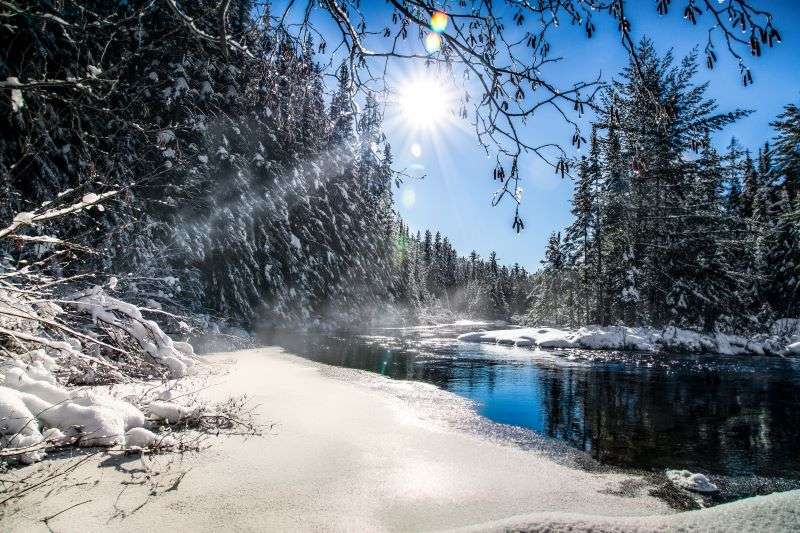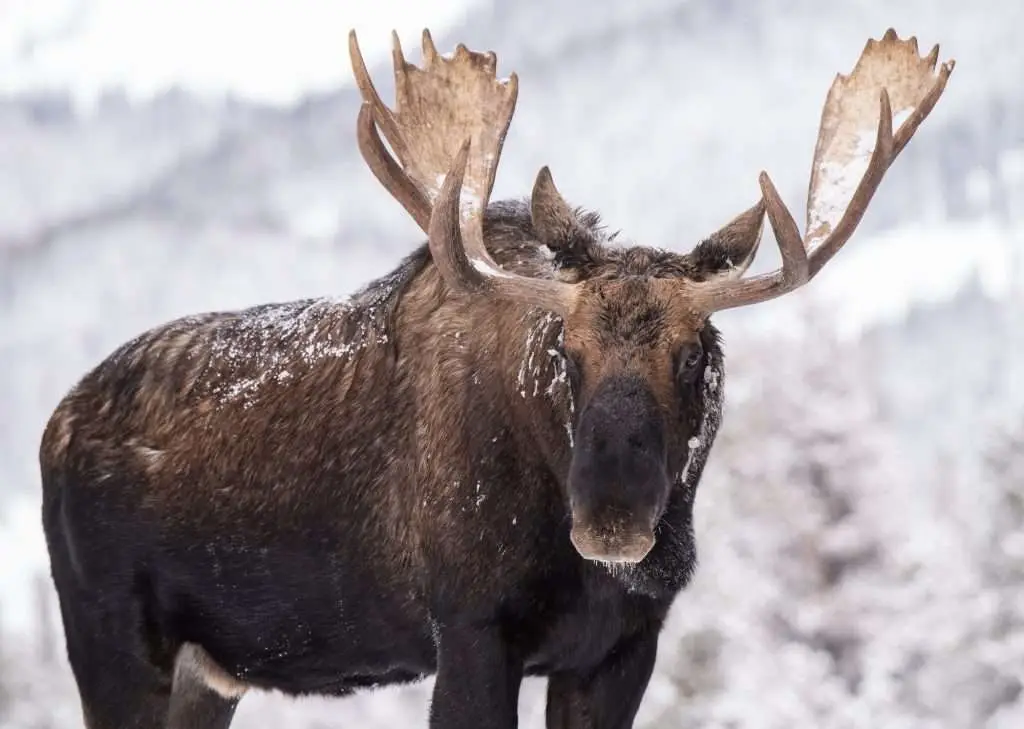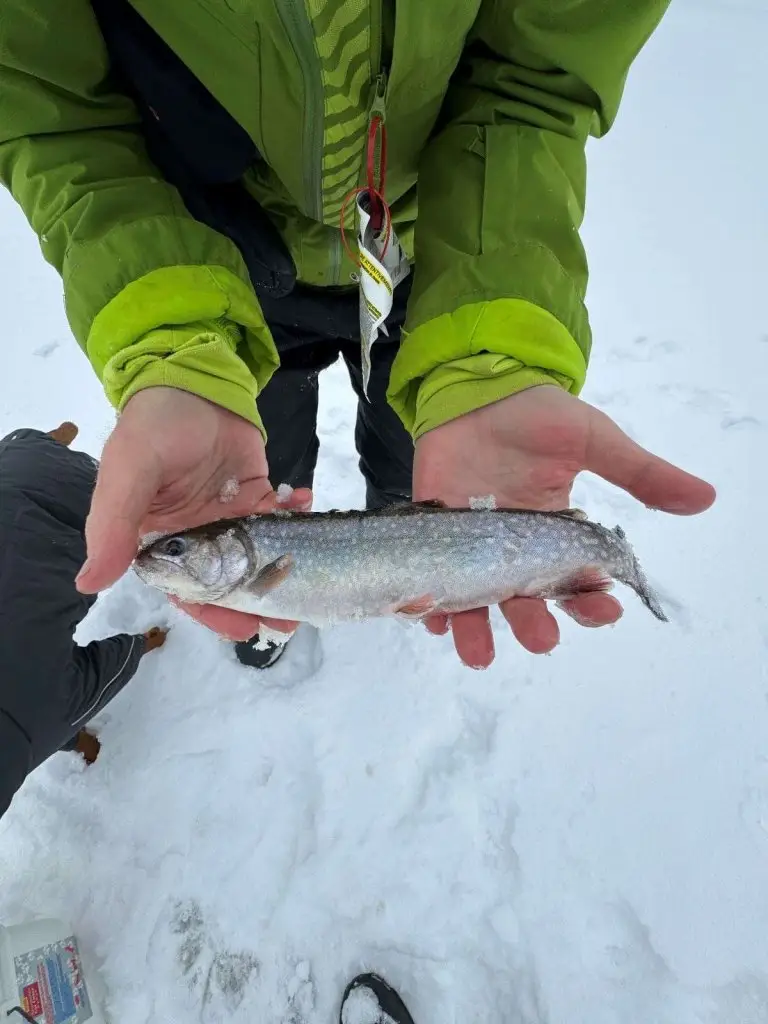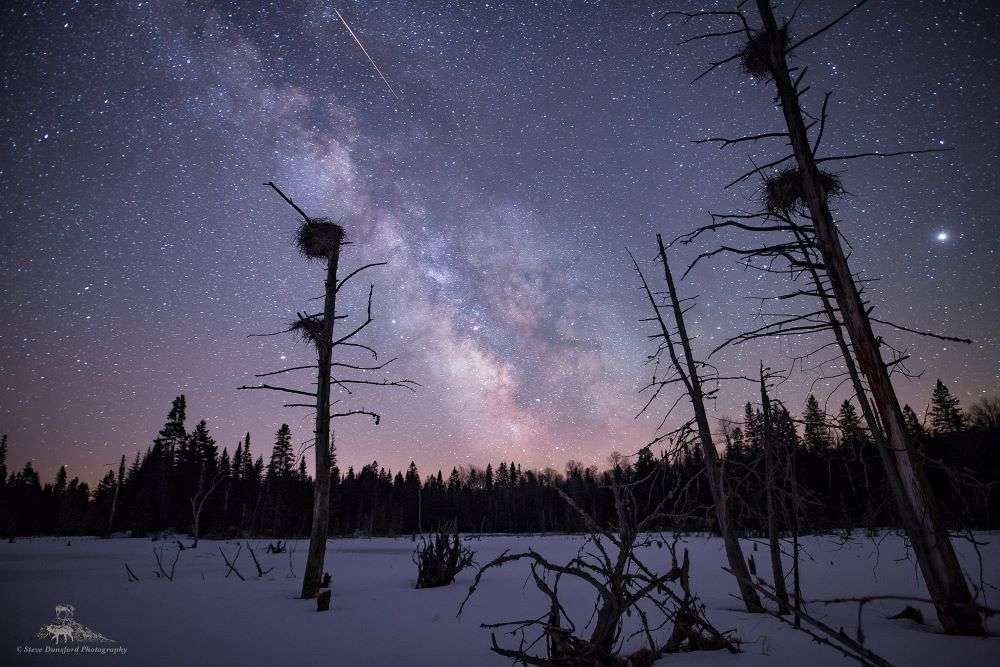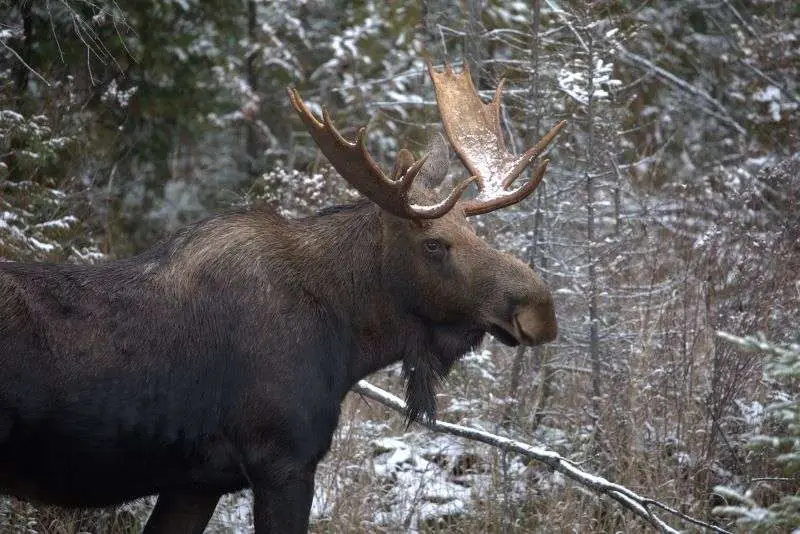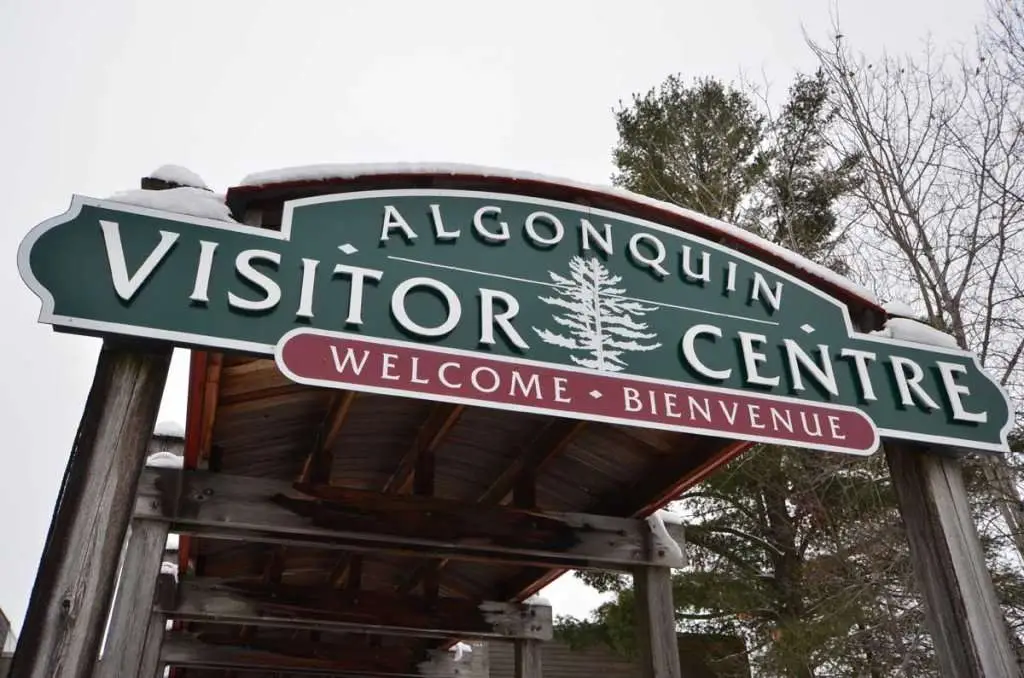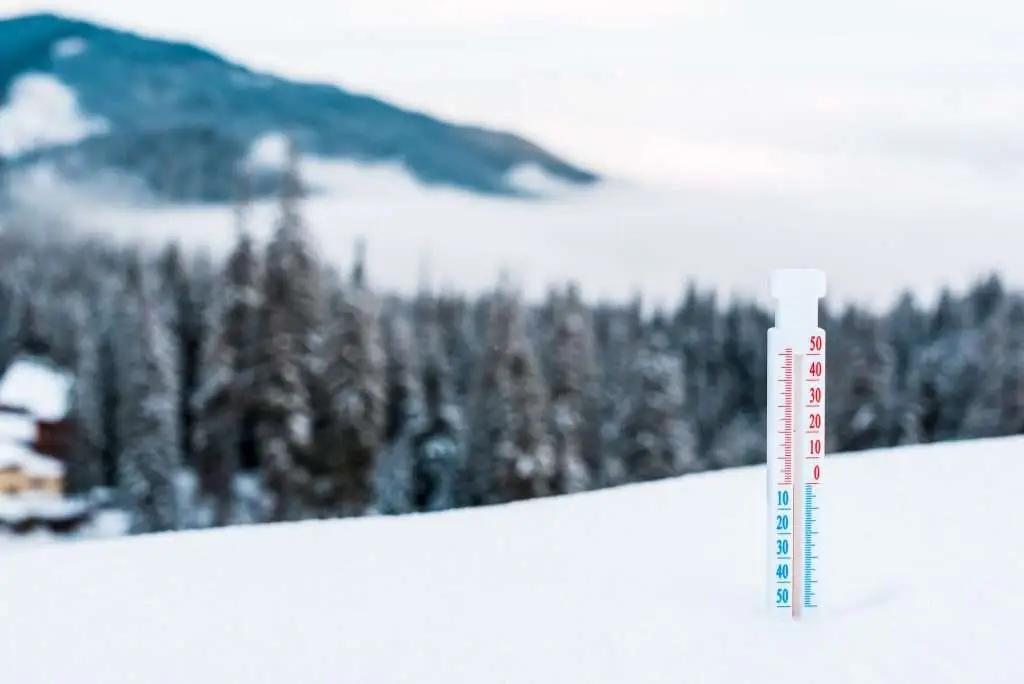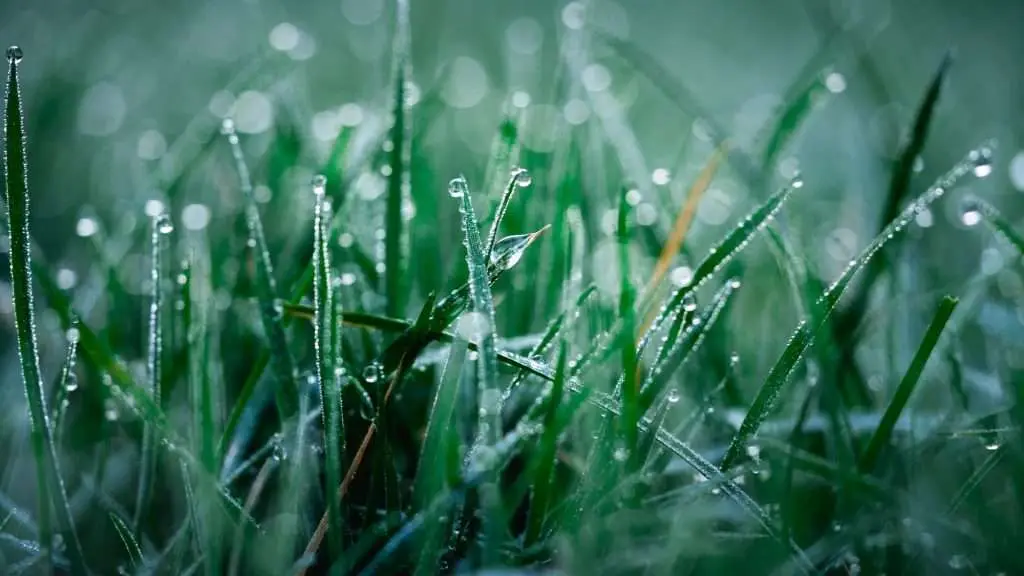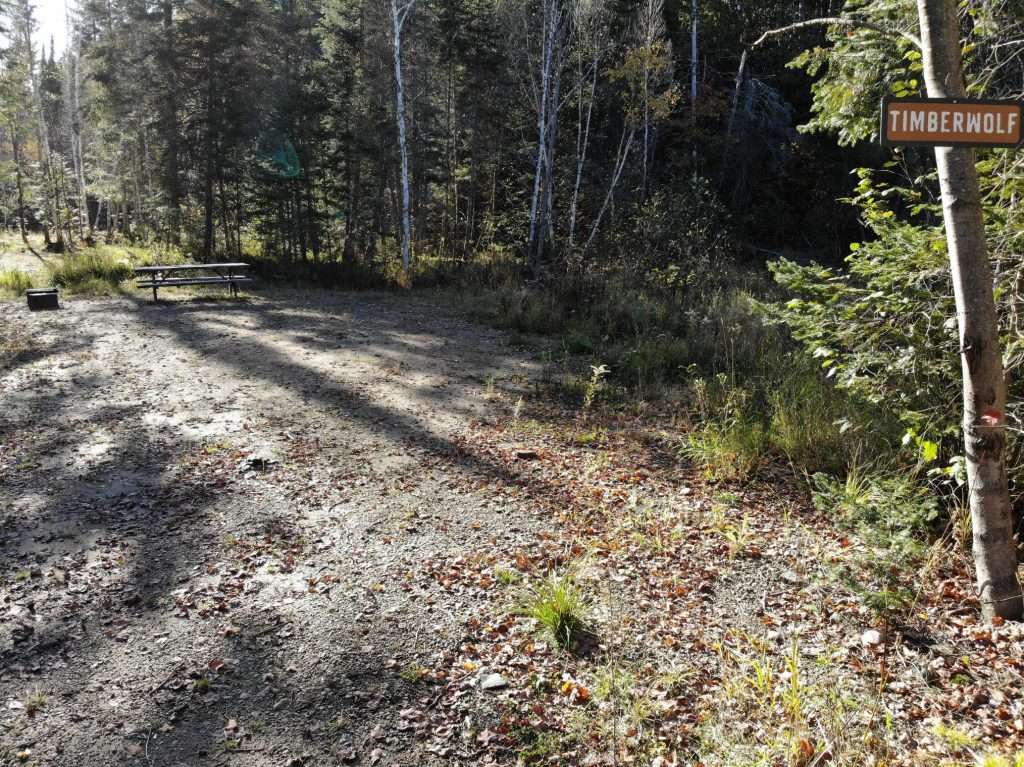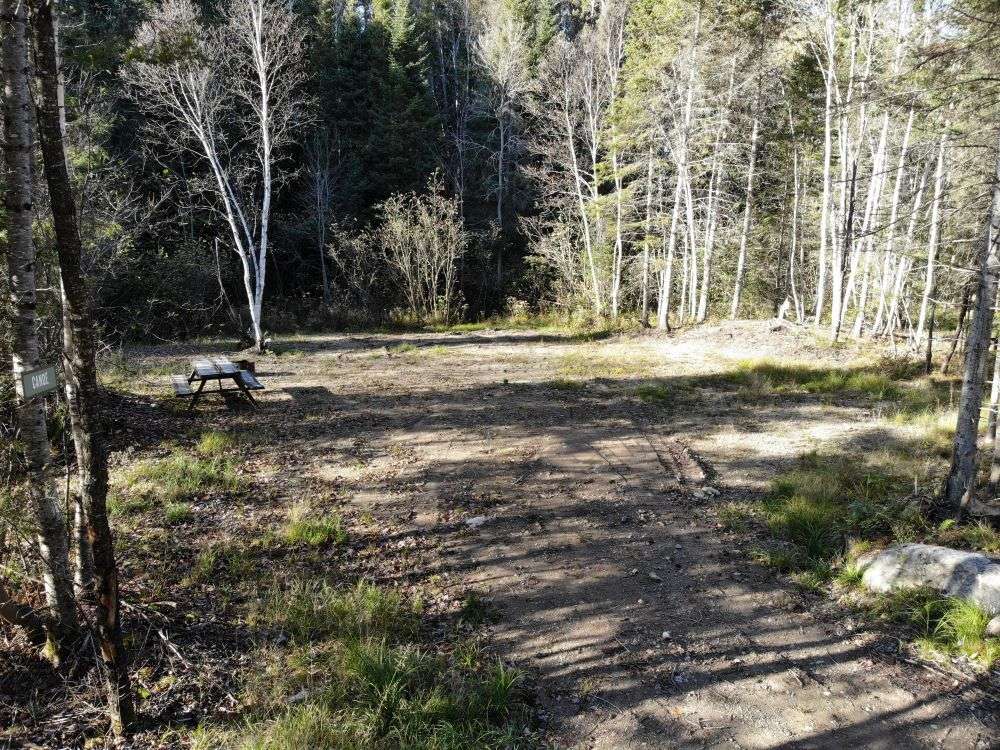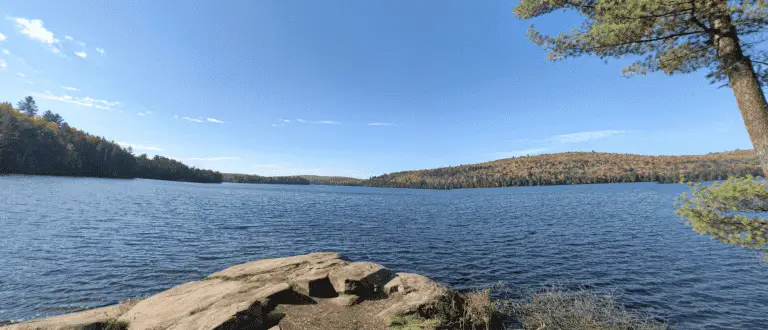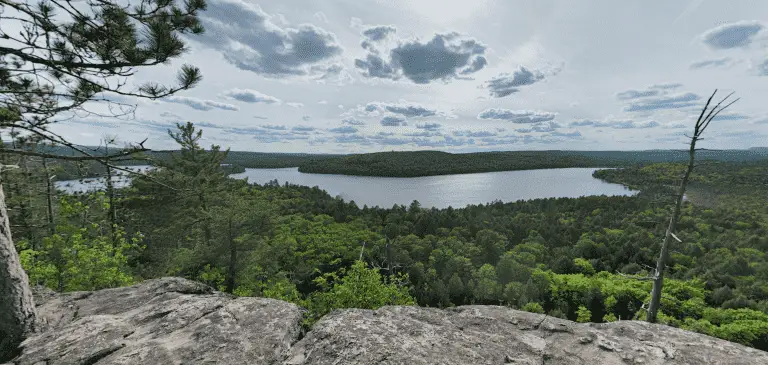Hey there! Have you ever thought about diving into winter camping in Ontario? It’s not just about braving the cold – it’s about turning the frosty embrace of nature into something unforgettable.
The old familiar trails and campsites that you’ve visited in the fall or summer months look entirely new when you go camping in winter climates!
The snow turns everything into a magical canvas, and if you’re patient, you might catch a glimpse of some incredible creatures – foxes, deer, maybe even a majestic moose. It’s like you’re in a winter wonderland, discovering something new at every turn.
Winter camping is a big hit with survivalists that want to prove that they can cope with the elements. But winter camping shouldn’t just be about surviving – it should be about having a great time surrounded by beautiful snowscapes!
In this blog, we’ll share some insights that’ll help you plan and prepare for a winter camping trip in Ontario.
Table of Contents
Preparing for winter camping in Ontario
Winter camping in Ontario is a unique and thrilling adventure, offering outdoor enthusiasts a chance to experience the province’s pristine wilderness in a whole new light. With its vast landscapes, diverse ecosystems, and the magic of winter, Ontario provides an ideal playground for those seeking an unforgettable cold-weather camping experience.
As you prepare for your winter camping expedition, ensuring you have the right gear is paramount. The bone-chilling temperatures demand proper insulation, and investing in quality winter camping gear is a must.
From insulated winter camping tents and sleeping bags to specialized winter clothing, being adequately equipped will make your adventure not only more comfortable but also safer.
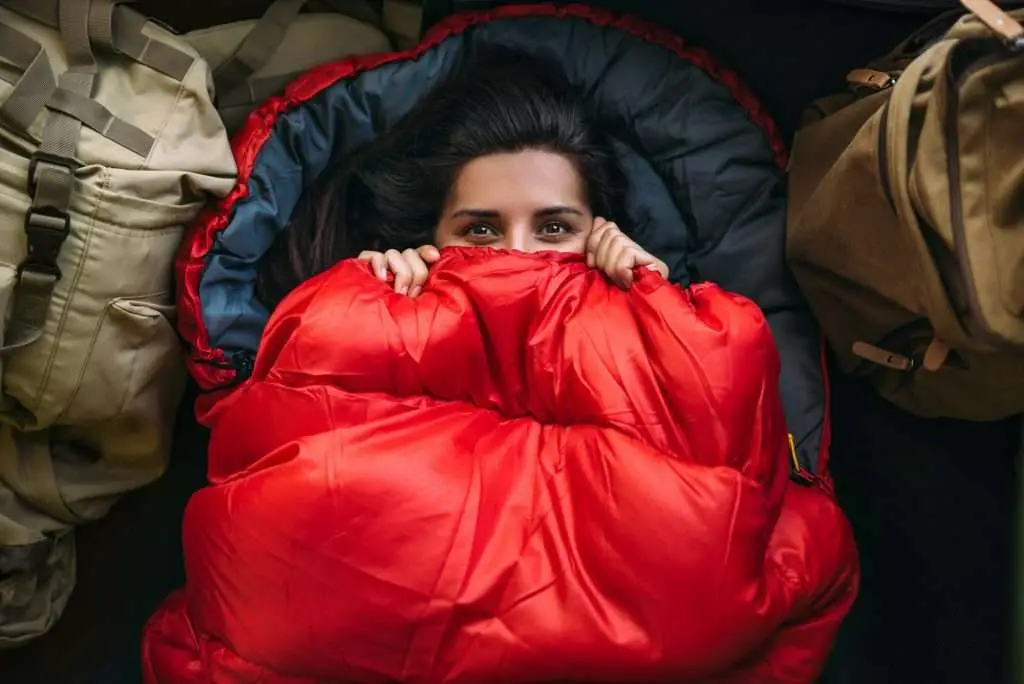
Winterized Equipment
- Insulated, sturdy four-season winter camping tent designed to withstand both snow and windy conditions
- Pro tip: Make sure your winter camping tent is properly ventilated to prevent condensation buildup
- High-quality cold-weather sleeping bags with appropriate temperature ratings.
- Pro tip: Consider a mummy-shaped sleeping bag for better heat retention
- Winter-ready backpack with water-resistant properties to keep your gear dry inside
- Sleeping pad to lay beneath you under the sleeping bag to add extra distance between you and the cold, hard ground
- Flashlights and/or headlamps so you can see even if you’re caught out in the dark
- Emergency shelter or bivy bag for unexpected situations
- Ready-made meals and fuel-filled snacks that are easy to grab on the go

Clothing and Layers
- Lightweight gloves for dexterity while handling equipment
- Heavy winter water-resistant winter mittens to wear overtop of gloves
- Thermal underwear and under layers
- A hat to cover your head and keep the heat in
- Scarf and/or balaclava to keep your neck and the rest of your face warm and dry while hiking or trekking out of doors
- Long-sleeve shirts and sweaters to wear over tank tops and beneath jackets for optimal layering
- Thick winter jacket that is insulated and moisture-resistant to keep you dry in wet and snowy conditions
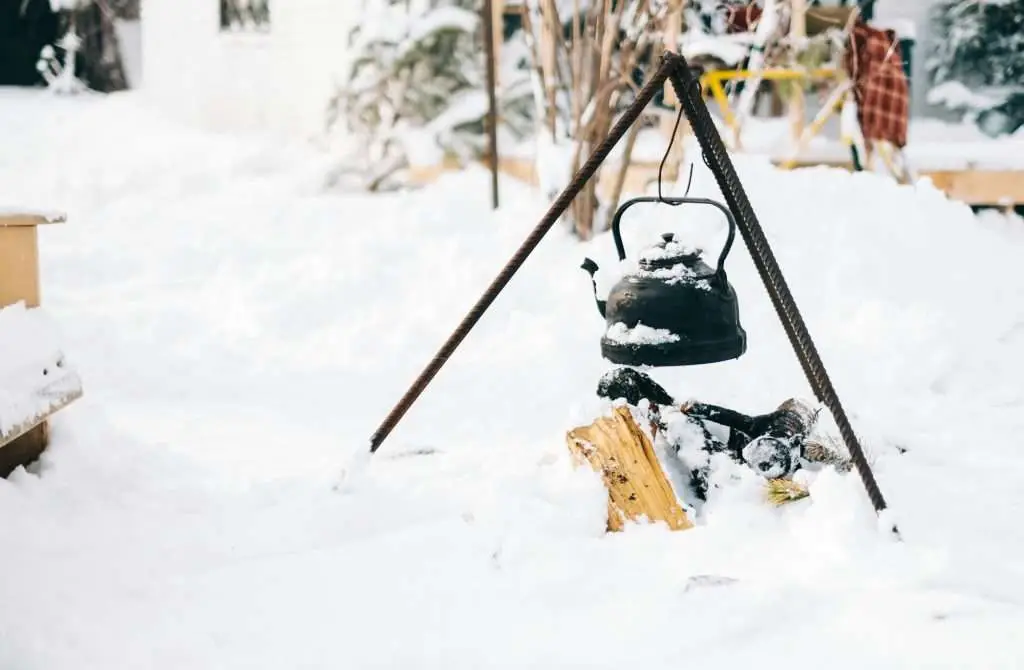
Must-Have Extra Gear
- Cooking system (including winter-specific fuel to keep it lit!)
- Snowshoes or skis to keep your boots above the snow
- Trekking poles for balance on tricky trails
- Snow shovel (to get you and your vehicle out of any tight spots)
- Navigation tools (compass, map, GPS devices that aren’t sensitive in extreme temperatures)
- First aid kit (specifically with supplies meant to help quickly heat you up and treat cold-related injuries like frostbite)
- Personal toiletries (toilet paper, lip balm and moisturizer to treat chapped skin, sunglasses to protect from the sun and wind during sunny winter hikes, etc)
Winter camping beckons the adventurous soul into a realm where nature unveils its most enchanting secrets.
Beneath the silver-laced boughs of ancient evergreens, a snowy tapestry unfolds, casting a spell of ethereal beauty. The soft hush of falling snow, a gentle whisper of winter’s embrace, cradles the intrepid camper in a cocoon of tranquility. As daylight wanes, the celestial dance of stars above transforms the frost-laden landscape into a celestial canvas, where each glittering snowflake becomes a testament to the sublime poetry of the season.
Can’t you just picture it? A campfire crackling, interrupting the silence. Warm beneath a huddle of blankets as you watch the firelight sparkle on the snow. *sigh* 😌
If this picture gets you excited about going camping in the winter, then your next step is to choose your destination!
Below we’ll share a list of our top 5 favourite places to stay for winter camping in Ontario.
1. Algonquin Provincial Park
Algonquin Provincial Park, known for its sprawling forests and crystal-clear lakes, transforms into a serene winter wonderland. The park’s well-maintained trails beckon adventurers, providing opportunities for wildlife sightings and awe-inspiring scenery.
See Also: AlgonquinPark.net
2. Killarney Provincial Park
Killarney Provincial Park, with its iconic white quartzite ridges and cobalt-blue lakes, presents a winter landscape unlike any other. While the park poses challenges with its rugged terrain, the breathtaking views and the sense of accomplishment make it a must-visit destination for winter camping enthusiasts.
Photo by: Alex Indigo from Santa Clara, CA, CC BY 2.0 via Wikimedia Commons
3. Bruce Peninsula National Park
Nestled on the shores of Lake Huron in Ontario, Bruce Peninsula National Park transforms into a winter wonderland, offering an enchanting escape for adventurous souls seeking a unique camping experience. Blanketed in pristine snow, the park’s rugged landscapes, including the iconic Georgian Bay coastline and ancient limestone cliffs, take on an ethereal beauty that is truly breathtaking.
Photo by: tiziana corsi, CC BY-SA 4.0 via Wikimedia Commons
4. Frontenac Provincial Park
Winter camping at Frontenac Provincial Park in Ontario promises a serene retreat into a snowy sanctuary. With its vast network of pristine trails and secluded campsites, the park transforms into a peaceful haven for those seeking solitude amidst nature’s winter splendour. Surrounded by towering pines and frozen lakes, Frontenac offers a unique opportunity to experience the hushed beauty of the Canadian wilderness during the winter months.
Photo by: Mark Arney, CC BY 3.0 via Wikimedia Commons
5. Sleeping Giant Provincial Park
If you’re looking for true seclusion, Sleeping Giant Provincial Park, located east of Thunder Bay, may just be the experience you’re looking for. Nestled along the rugged shores of Lake Superior, the park unveils a pristine winter wonderland, where the iconic Sleeping Giant rock formation stands majestically against the backdrop of glistening snow-covered landscapes. With well-prepared gear and a heart attuned to the magic of winter, Sleeping Giant Provincial Park becomes a captivating tableau where the spirit of exploration meets the timeless allure of nature’s icy embrace.
What to eat while winter camping in Ontario
Winter camping isn’t just about survival; it’s an opportunity to indulge in culinary delights against the backdrop of a snowy wonderland.
Cooking in cold weather requires a different set of skills, and there’s something uniquely satisfying about enjoying a hot, hearty meal around a campfire as the snow falls gently around you. Have you considered ice fishing while winter camping? Fresh trout right out of the ice is a culinary winter delight.
Make sure to always pack cooking equipment that is created to withstand cold and windy temperatures, and invest in winter-ready fuel to make sure you don’t run into trouble while you’re out in the cold!
The top 5 meals to bring winter hiking
Here are our top 5 go-to meals for winter camping – links to the recipes included!
- Hot soups and stews
- Chili and rice
- Pasta with protein sauce
- Oatmeal with toppings
- Back-country casseroles
Prepare all your meals in advance of your trip and freeze them. Once you’re at your campsite, heat them up in a pot over the fire and enjoy these protein-filled meals that will help fill your tummy at the end of a long day of winter adventure!
Pro tip: On the nights when things just don’t work out the way you wanted, remember that you can always check out the local eateries for take-away back to the campsite!
The added perks of winter camping in Ontario
 There are plenty of benefits to winter camping in Ontario – or anywhere!
There are plenty of benefits to winter camping in Ontario – or anywhere!
The crisp, frozen landscape introduces a unique set of challenges and rewards, where the pristine stillness not only tests one’s resilience but also promises an unparalleled sense of peace. The colder temperatures unveil a heightened visibility for stargazing and celestial phenomena, presenting an opportune canvas for astrophotography enthusiasts.
The winter season significantly enhances wildlife visibility, providing an exceptional chance for wildlife observation and photography as creatures traverse the snow-clad terrain in search of resources.
 And, bonus! – you get to avoid most of the crowds that flock into these areas in the fall and summer months!
And, bonus! – you get to avoid most of the crowds that flock into these areas in the fall and summer months!
The allure of winter camping in Ontario lies not only in the serene beauty of the landscape but in the technical challenges and unique experiences it presents, making it a truly rewarding endeavour for those ready to embrace the cold with preparedness and enthusiasm.
Also Read: Take a look at our blog on the elusive albino moose (note: visibility may be impacted by winter climates 😛)
Capturing the northern lights and starry skies
- Get your location just right! You can see the starry sky better on chilly nights – it’s true! Although wintery clouds might get in the way, patience and location are your allies!
- If night sky images are on your to-do-list, make sure to invest in a sturdy tripod that can sit outside for you while you rest, and gear that won’t be affected by snow, wind, or frosty nighttime temperatures!
Pro Tip: Algonquin Park has some of the best night sky viewing in Ontario.
Taking the best shots of winter wildlife
- If you hike quietly, be sure to keep your eyes open and your winter-ready cameras up so you can snap some snowy critters in their natural habitat!
- Use a telephoto lens to get those up-close shots without needing to get too close to animals (which runs the risk of scaring them away!)
Pro Tip: Algonquin Park has the best (and most photogenic) moose, just look at this guy’s pose.
Get the best out of those winter landscapes
- Wait for the opportune moment! Go out one day just to scout different areas at different times of day. Where does the sun sit in the sky in the morning versus at night, and how does that sunshine change the scenery?
- Find frozen waterways that will sparkle and shine in the winter sunlight, or snow-packed areas that shine with pristine whiteness to get the best out of your winter landscape photography!
- If Algonquin is your destination, you will enjoy access to 18 hiking trails, most of which are open and can be hiked year around.
Immerse yourself in local culture
- Check out local activities, museums, and events near your campsite to fill up your days! There may be winter festivals near you at the time that you plan to go camping – definitely check them out if you have the time!
- Family Day each year offers visitors a special treat with the Winter in the Wild Festival in Algonquin Park.
- Stop for a meal at one of the local restaurants to fill your belly and get connected to the local community.
Pro tip: Read this blog on the 5 best snowmobile trails near Algonquin Park!
Frost and safety: what you need to know before winter camping in Ontario
We can’t send you off on a winter camping experience without making sure to remind you of the unique challenges of camping in the winter.
Before you book your winter campsite, you should have a very clear understanding of how to treat winter-related injuries, how to pack and prepare for winter weather, and where to go if you’re experiencing an emergency in the middle of your winter camping experience.
Here are some of the key considerations you need to keep in mind before you book your trip.
Temperatures fluctuate
Even if the days are bright and sunny, temperatures can be cold throughout the day – and they will definitely plummet throughout the nighttime hours. It is extremely important to remember that the temperatures at night will be far below those of the day. Make sure you have a plan in place for any nighttime bathroom needs you may experience through your trip!
Frozen equipment
Depending on the weather, you could experience snow-covered and soaking wet gear, in addition to gear breaking down due to ice accumulation or low temperatures. Your phone, for instance, is a piece of equipment sensitive to extreme temperatures, and you may find that your battery dies if you have it out in the cold.
Heavy snows and visibility issues
If you’re taking winter trips out on the snowy trails, just remember to check the weather – and keep in mind that even The Weather Network gets it wrong sometimes! Heavy snowfall and poor visibility can make it hard for you to see the trails and get around during the winter. This is especially important to keep in mind if you start a hike in the afternoon. Factor in slower hiking speeds when you make plans for day trips to make sure you’re back at your site in plenty of time before night falls.
Condensation accumulation
You may not have a chance to fully dry your clothing or equipment overnight, depending on the weather. Even the inside of your winter camping tent could experience a buildup of condensation over time, as the damp things you bring in with you may create a moist climate inside. Always pack enough clothing to wear for every day of your trip, so you aren’t dangerously disappointed if you can’t have a fire or successfully warm up your wet things before the next day’s adventure begins.
Pro tip: In the heart of winter, when the cold seems too biting for any outdoor activity, there’s an age-old method for drying winter clothing and items that might seem counterintuitive at first: air drying them in the freezing cold. By hanging your damp clothing or linens on a line outside, they’ll quickly freeze.
The next step involves gently beating the ice and snow off them. This process may need to be repeated a few times until the items are fully dry. Once they reach this stage, bring them inside to thaw and finish drying. This method, traditionally used in northern communities for winter laundry, leverages the dry, cold air to leave fabrics feeling surprisingly fresh.
Skeptical? Give it a try at home and discover for yourself how remarkably fresh and clean your clothing or sheets can smell after being air-dried in the crisp winter air.
Also Read: Where to stay if you need to get warm in a hurry – the top 5 motels to visit in Whitney, Ontario.
Have a backup plan: where to go if winter camping goes sideways
The bottom line is: always plan for the worst and hope for the best in any situation.
- Invest in the best winter camping equipment you can before you book a trip.
- Make sure you’ve packed for every possibility.
- Be aware of local amenities and healthcare facilities in case of emergencies.
- Have a backup plan in case things get complicated.
Whether you’re a first-time winter camper or a seasoned winter explorer, things can still go sideways pretty quickly. If that happens, it’s important to be aware of what’s around you so that you can get somewhere warm, dry and cosy pretty quickly.
Before you book a winter campsite, check out what’s nearby, and have a map that’s clearly marked and easy to read that can tell you how to get there in case of emergencies.
For example if you’re winter camping at Algonquin Provincial Park, you should know that South Algonquin (the township right below Algonquin Park) has several year-round motels that you can book if you’re in a pickle.
Complete with warm beds and hot showers, and very close to local amenities, our Algonquin Accommodations properties will be here, just in case you need a backup plan. 😉
Stay safe, and have fun!
Looking for summer camping trips while you’re here? Our Wilderness Campground will be opening up in May!

